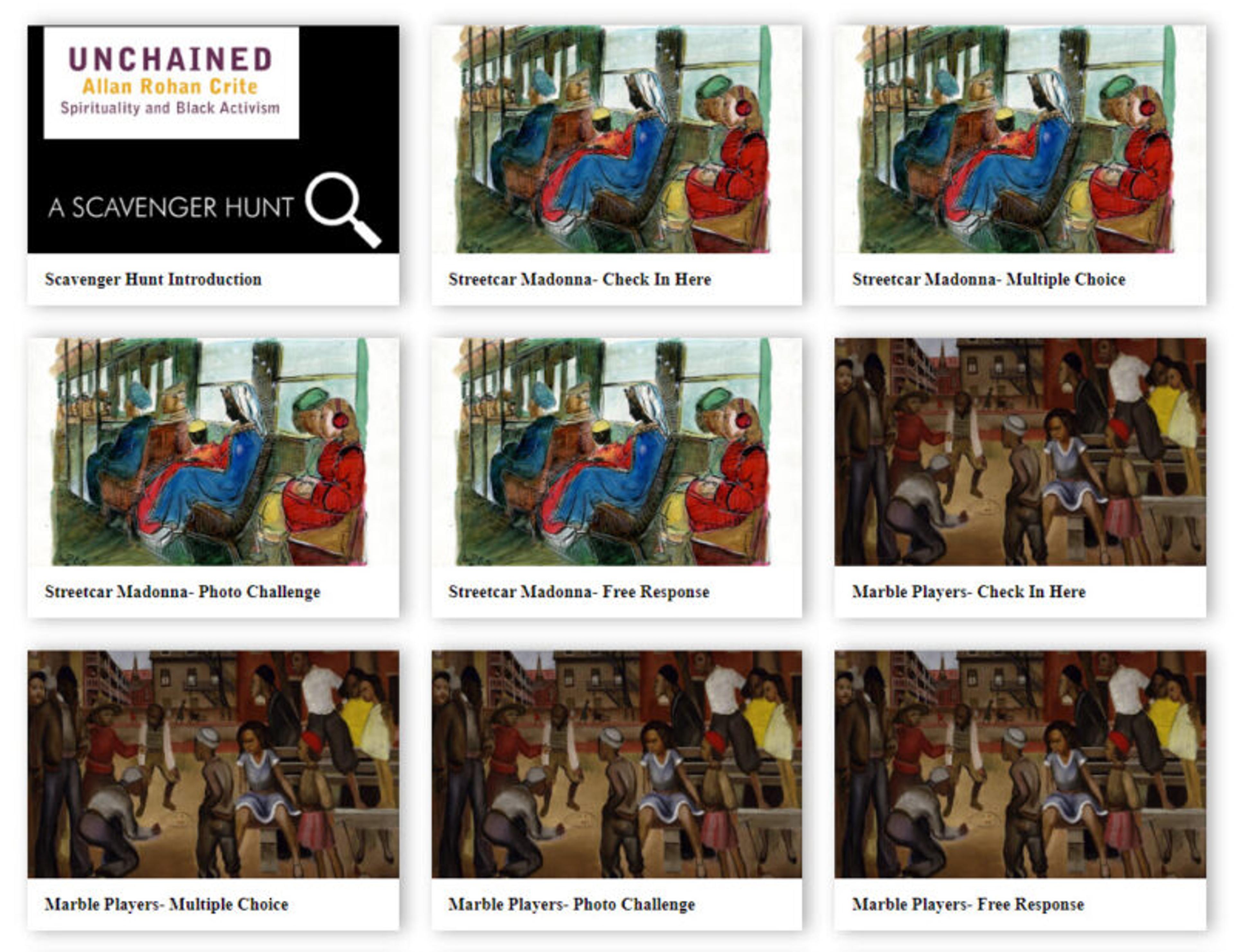
Munson-Williams-Proctor Arts InstitutePartner Story
Munson-Williams-Proctor Arts Institute strengthens its ties with local communities.
Engaging Their Community
In early 2022, the Munson-Williams-Proctor Arts Institute (MWPAI) hosted the exhibition Unchained: Allan Rohan Crite, Spirituality and Black Activism, one in a series of American art exhibitions created through a multi-year, multi-institutional partnership with the Museum of Fine Arts, Boston, as part of the Art Bridges Cohort Program.
With the support of Art Bridges, the museum deepened its engagement with local African American communities by continuing their work with the African American Community Partners (AACP). Together, they collaborated on content creation, marketing, interpretation, and programming for Unchained, the first exhibition to explore how the spiritual art of Allan Rohan Crite reflected the African American quest for racial justice.
Bringing together over sixty of the artist’s works, the exhibit revealed how his art, faith, and social connections began and extended beyond worship spaces. Thus, the museum prioritized building programming that reflected the lived experiences of local African Americans and explored religious art as a vehicle for community building.

Two visitors gather in front of artworks in the exhibition. Photographed by Michael Foster Rothbart. Courtesy of the Munson Williams-Proctor Arts Institute, 2022
Activating the Exhibition
The MWPAI’s Learning & Engagement project featured a series of programs designed to bolster community participation and strengthen the relationship between the organization and local African American communities. This goal was accomplished, in part, by the creation of Unchained: Community Voices. In this in-gallery audio guide, visitors could listen to audio from AACP members and local ministers of primarily Black congregations. The creation of this offering centralized voices from Utica’s African American communities and made contemporary and local connections to exhibition topics like activism, identity and faith. Their reflections enlivened Crite’s works and complemented the artist’s community-inspired artistic practice.
On their exhibition experience one visitor reflected: “There is grace, beauty, and strength in the Black Christian experience. Although only depictions, this collection is a glimpse into the ever-recurring tragedy and subsequent triumphs in our history. Thank you.”
To deepen in-gallery engagement for families, the museum created a mobile scavenger hunt that encouraged discovery and close looking. Using Crite’s Streetcar Madonna, Marble Players and Harriet and Leon, visitors were invited to complete free responses, answer multiple choice questions, and participate in a photo challenge. The MWPAI further prioritized contemporary connection-making by displaying photographs of current Black activists and movements. Images of consciousness raising, organizing and protests drew parallels to the struggle from oppression to equal rights, a central theme in Crite’s work.
Sweet Honey in the Rock Performs
The museum also hosted a performance by the nationally acclaimed gospel, blues, and jazz ensemble Sweet Honey in the Rock. In addition to enjoying rousing performances in the African American musical tradition, attendees observed enlarged projected images of Crite’s illustrated spirituals alongside the performance with live ASL interpretation. This intentional interplay between art and music strengthened the connections among faith, music, and community often explored in Crite’s works.
The museum also hosted a storytelling performance and community workshop for family audiences led by Charlotte Blake Alston. Alston is a nationally acclaimed, Philadelphia-based storyteller, narrator, instrumentalist, and singer who, for more than thirty years, has dedicated her career to preserving African and African American oral storytelling traditions. Her storytelling traditions particularly aligned with the narrative nature of Crite’s art and the historical and cultural perspectives represented in the exhibition.
Why We Love This Project
We love this project’s approach to authentic community building and interdisciplinary learning. From the start, the museum understood that the African American Community Partners would be indelible parts of planning the exhibition and its programming to great impact. Already, two AACP members have been invited to sit on the museum’s Board of Trustees. At the same time, the whole group continues to be a conduit to other African American community connections, including Utica School District’s summer school lunch distribution program and the city’s annual Juneteenth celebration.
The museum learned the investment of time and trust-building was instrumental in creating Unchained. This new collaborative way of exhibition building allowed community members a voice in representing themselves within the institution, an important step in diversifying the range of experiences represented at the Munson-Williams-Proctor Arts Institute.

New Available Groupings
Check out new groupings available to borrow from our Partner Loan Network lenders.
View the Groupings